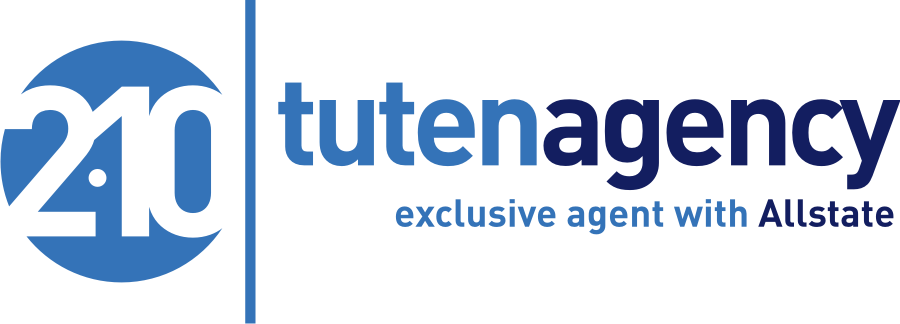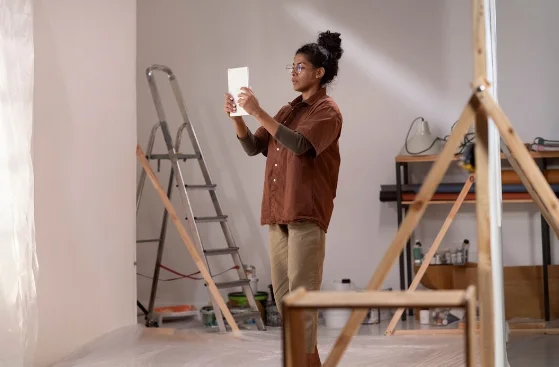Home improvement projects can impact your homeowners insurance rates, positively or negatively affecting your home’s safety, value, and liability risks. Some projects can lower your insurance rate by making your home safer and reducing the risk of claims. In contrast, others may increase your rate due to the increased value of your home or added liability risks. Therefore, it’s important to consider the potential insurance implications before starting any home improvement project.
In this article, we will discuss the different home improvement projects that can potentially decrease your insurance rates, those that may increase them, additional insurance options to consider during renovation projects, whether homeowners insurance covers home renovations, and the importance of updating your insurance policy during construction.
Home Improvements that May Lower Your Homeowners Insurance Rates
Renovating or replacing your roof
While a new roof may not be the most exciting home improvement, it can save you money on your homeowners insurance. Replacing your roof with newer or stronger materials usually results in a reduction in premium. A sturdy roof can better withstand potential covered perils, reducing the risk of damage to your home.
Upgrading your wiring or plumbing
Outdated electrical wiring, such as knob-and-tube wiring, poses a higher risk of causing a fire. Upgrading to modern Romex wiring can reduce the risk and lower your premiums. Similarly, upgrading your plumbing hardware to more modern materials can reduce the risk of water damage and result in a lower insurance premium.
Adding security systems and sprinklers
Installing security systems, such as alarm systems that alert the police or central dispatch teams, can earn you a discount on your homeowners insurance. Interior sprinkler systems also lower the risk of extensive fire damage, potentially reducing your premiums. Additionally, installing smart home devices and systems might qualify you for a discount.
Making your home storm-resistant
Certain improvements can make your home more resilient to storms and natural disasters, leading to lower insurance rates. Examples include:
- Installing hurricane straps or ties to reinforce the connection between your roof truss and walls.
- Using impact-resistant shingles to protect your roof from hail damage.
- Replacing windows with impact-resistant glass.
- Installing roll-down shutters to minimize the risk of glass damage during a storm.
Home Improvements that May Increase Your Homeowner Insurance Rates
Building a swimming pool
While adding a swimming pool may increase your home’s value and appeal, it also significantly increases your liability risk. Pools are considered “attractive nuisances” and can lead to higher homeowners insurance premiums due to the increased risk of accidents and injuries.
Adding an office for a home business
Adding a home office can enhance your home’s value with the rise of remote work. However, owning a home business can lead to higher insurance rates. You may need to purchase additional coverage or a separate home business policy to protect your business-related assets and equipment and provide liability coverage for potential incidents and injuries.
Adding a fireplace
Wood-burning fireplaces and stoves increase the risk of house fires, which can result in higher insurance rates. Gas-burning fireplaces are generally considered safer and may not affect your premiums significantly.
Building a treehouse
Treehouses are also considered attractive nuisances, and their construction can lead to higher insurance premiums. The additional risk of treehouse injury necessitates increased coverage to protect against potential liability claims.
Upgrading your kitchen or bath
Renovating your kitchen or bathroom can add value to your home. However, if these upgrades involve higher-quality materials or result in increased dwelling coverage requirements, you may need to adjust your insurance policy accordingly. This adjustment may come with an additional premium cost to ensure that your coverage aligns with the enhanced value and features of your upgraded kitchen or bathroom.
Additional Home Renovation Insurance Options
When undertaking home renovations, it is essential to consider additional insurance options to ensure adequate coverage. These options include:
- Builders risk insurance: This type of insurance covers the structure and materials during the construction phase. It protects against risks such as fire, theft, and vandalism.
- Vacant home insurance: If your home is vacant during renovations, your existing homeowners insurance policy may need to provide adequate coverage. Vacant home insurance offers protection against specific risks associated with unoccupied properties.
- Contractors insurance: If you hire contractors for your renovation project, ensure they have proper insurance coverage. Contractors insurance protects against liabilities arising from accidents or property damage that may occur during the construction process.
- Liability insurance: During home renovations, your property has an increased risk of accidents and injuries. Liability insurance can protect you in case of injury claims during construction. It covers legal fees, settlements, judgments, and medical expenses.
- Umbrella insurance: Consider purchasing an umbrella insurance policy to provide additional liability coverage beyond the limits of your standard homeowners insurance. Umbrella insurance can offer extended protection in case of major accidents or lawsuits related to your home renovation projects.
Does Homeowners Insurance Cover Home Renovations?
While homeowners insurance covers injuries or theft that may occur during home renovations, it typically does not cover the actual renovation projects themselves. Homeowners insurance covers the cost of repairing or rebuilding if your home is damaged or destroyed by a covered peril. Any improvements made to the house before the damage may be covered if you updated your policy accordingly, such as increasing your dwelling coverage limit to account for higher-quality building materials or an addition.
Updates You Should Make to Your Homeowners Insurance During Construction
During the construction phase of a major home renovation, updating your homeowners insurance policy is crucial. Consider the following changes:
- Revisiting your personal property limit: Homes undergoing renovations can be targets for theft. Ensure that your personal belongings in the home are adequately covered by adjusting your personal property limit if necessary.
- Increasing personal liability coverage: Construction sites pose risks, and injuries can occur. Consider increasing your personal liability coverage to protect yourself in case someone gets injured on your property during the renovation.
- Notifying your insurance company: Inform your insurance company about the renovation project. They can guide the coverage you need and any additional endorsements or policies required during construction.
- Updating the dwelling coverage limit: If your renovation project increases the value of your home, you may need to raise the dwelling coverage limit on your policy to ensure adequate coverage in case of a loss.
- Checking for policy exclusions: Review your policy to understand any exclusions or limitations that may apply during construction. For example, certain perils or damages related to construction work may not be covered. Discuss these details with your insurance provider and consider purchasing additional coverage if needed.
Conclusion
Home improvement projects can lower your homeowners insurance rates by reducing risks and enhancing the safety of your home. Projects such as roof replacements, wiring upgrades, security system installations, and storm-resistant improvements can lead to discounts on your premiums. However, certain renovations, like adding a swimming pool or a home office, can increase insurance rates due to increased liability risks.
Reviewing your insurance policy, considering additional insurance options during construction, and updating your coverage to ensure adequate protection during and after the renovation process is important. Contact your insurance provider for specific guidance tailored to your home and renovation plans.
FAQs
Will my homeowners insurance cover injuries or theft during home renovations?
Yes, homeowners insurance generally covers injuries or theft that may occur during home renovations. However, it’s important to note that the insurance primarily covers the structure and personal belongings, not the renovation projects themselves. If you make improvements to your home before the damage, such as upgrading building materials, you can claim those improvements if you updated your policy accordingly.
What is builder’s risk insurance, and do I need it for my renovation project?
Builder’s risk insurance covers the structure and materials during the construction phase of your renovation project. It protects against risks like fire, theft, and vandalism. If you’re undertaking a major renovation, it’s advisable to consider builder’s risk insurance to ensure adequate protection during the construction process when your regular homeowners insurance may not provide sufficient coverage.
Are there any policy exclusions or limitations I should know during home renovations?
Yes, it’s crucial to review your homeowners insurance policy for any exclusions or limitations that may apply during home renovations. Certain perils or damages related to construction work may not be covered. Discuss these details with your insurance provider and consider purchasing additional coverage, such as builder’s risk insurance, to ensure adequate protection during the renovation period.

